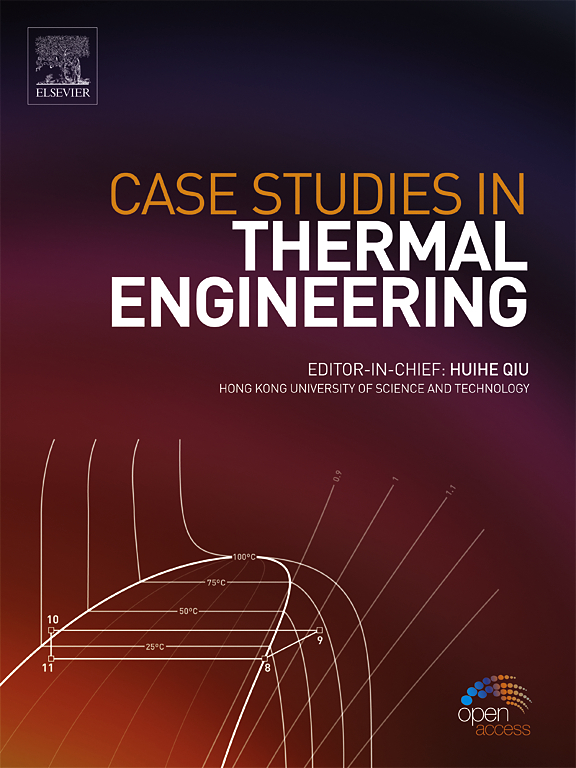Enhancing solar thermoelectric generator performance using metal oxide layer absorbers under concentrated solar radiation
IF 6.4
2区 工程技术
Q1 THERMODYNAMICS
引用次数: 0
Abstract
Solar Thermoelectric Generators (STEGs) hold promise for sustainable energy, with ongoing efforts to enhance efficiency through advanced thermal absorbers. This study evaluates the performance of STEGs using graphite sheet (GS) and metal oxides layer (MOL) absorbers under solar concentrations of 20, 40, 60, and 80 suns. Performance metrics, including short-circuit current (Isc), open-circuit voltage (Voc), maximum power output (Pmax), and efficiency (η), were measured experimentally using the KIRAN-42 solar simulator and compared with COMSOL Multiphysics simulations. The MOL-based STEG outperformed the GS-based counterpart, achieving Pmax (η) values of 0.559 W (1.75 %), 1.818 W (2.84 %), 3.071 W (3.2 %), and 3.762 W (2.94 %) at 20, 40, 60, and 80 suns, respectively, compared to 0.308 W (0.96 %), 1.120 W (1.75 %), 1.984 W (2.1 %), and 2.670 W (2.1 %) for the GS-based STEG. Experimental and simulation discrepancies were minimal at lower concentrations (1.9 % and 6.4 % at 20 suns) but increased at 80 suns (32.4 % and 41.7 %). Both approaches showed strong linear correlations between Pmax and solar concentration (R求助全文
约1分钟内获得全文
求助全文
来源期刊

Case Studies in Thermal Engineering
Chemical Engineering-Fluid Flow and Transfer Processes
CiteScore
8.60
自引率
11.80%
发文量
812
审稿时长
76 days
期刊介绍:
Case Studies in Thermal Engineering provides a forum for the rapid publication of short, structured Case Studies in Thermal Engineering and related Short Communications. It provides an essential compendium of case studies for researchers and practitioners in the field of thermal engineering and others who are interested in aspects of thermal engineering cases that could affect other engineering processes. The journal not only publishes new and novel case studies, but also provides a forum for the publication of high quality descriptions of classic thermal engineering problems. The scope of the journal includes case studies of thermal engineering problems in components, devices and systems using existing experimental and numerical techniques in the areas of mechanical, aerospace, chemical, medical, thermal management for electronics, heat exchangers, regeneration, solar thermal energy, thermal storage, building energy conservation, and power generation. Case studies of thermal problems in other areas will also be considered.
 求助内容:
求助内容: 应助结果提醒方式:
应助结果提醒方式:


